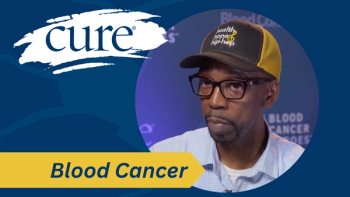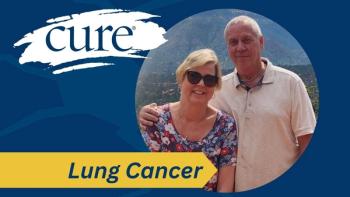
Time-Limited Venclexta Regimens Outperform Chemoimmunotherapy in CLL
Treatment with Venclexta plus Gazyva, with or without Imbruvica, led to better outcomes than chemoimmunotherapy in patients with chronic lymphocytic leukemia.
Time-limited therapy with Venclexta (venetoclax) plus Gazyva (obinutuzumab), with or without Imbruvica (ibrutinib), lengthened the average time until patients’ disease got worse — known as progression-free survival — compared with chemoimmunotherapy in patients with chronic lymphocytic leukemia (CLL).
A treatment is considered time-limited when it is only given for a set amount of cycles. In this instance, treatment with the time-limited drug combination was associated with a particularly impressive progression-free survival benefit for patients with CLL with unmutated IGHV status, according to data from the phase 3 GAIA/CLL13 clinical trial.
At a follow-up of 38.8 months, the median progression-free survival was not reached with Venclexta/ Gazyva / Imbruvica (GIV) or Venclexta/ Gazyva (GV), because so many patients were still alive without disease progression. For standard chemoimmunotherapy, the median progression-free survival was 52 months. GIV reduced the risk of CLL progression by 68% and GV reduced the risk of progression by 58%.
The three-year progression-free survival rates were 90.5% and 87.7% for patients who received GIV (231 patients) and GV (229 patients) respectively, compared with 75.5% for those who received standard chemoimmunotherapy (229 patients).
For patients who were randomly assigned to receive Venclexta plus Rituxan (rituximab), a combination known as RV, the median progression-free survival was 52.3 months. The three-year progression-free survival rate in the RV group (237 patients) was 80.8%.
These data support previously reported findings of increased minimal residual disease (MRD) negativity rates — which indicate little to no detectable disease left after treatment — among patients treated in the experimental treatment groups of GAIA. Study findings have shown that patients with MRD negativity tend to have improved progression-free survival.
“The interim (progression-free survival) analysis (shows) the triplet combination of (Venclexta) and (Gazyva) plus (Imbruvica) was clearly superior to chemoimmunotherapy with FCR (fludarabine, cyclophosphamide, Rituxan) for the younger patients or BR (bendamustine plus Rituxan) for the elderly patients who were fit,” said Dr. Barbara Eichhorst, an associate professor and attending physician at the University Hospital Cologne in Cologne, Germany, in a presentation of the data.
“(Venclexta) plus (Rituxan) was not superior, so it depends on the antibody, which you combine to the (Venclexta) treatment.”
Investigators also presented data from a subgroup analysis of patients with IGHV-mutant disease.
“Prognosis was favorable for patients with mutated IGHV status, there's not a big difference between chemoimmunotherapy and the targeted agents," Eichhorst said. "However, we see a huge difference particularly for patients with unmutated IGVH status."
The three-year progression-free survival rate for those in the GIV group (101 patients) was 96%; this rate was 93.6% for patients who received GV (89 patients), 87% for those who received RV (95 patients), and 89.9% for those who received chemoimmunotherapy (95 patients).
For those with unmutated IGHV status, the three-year progression-free survival rates were 86.6%, 82.9% and 76.4%, for those who received GIV (123 patients), GV (130 patients) and RV (134 patients), respectively, compared with 65.5% with standard therapy (131 patients).
Investigators initiated GAIA to evaluate time-limited, chemotherapy-free treatment options to challenge the standard of care for treatment-naive patients with CLL selected by a fitness score.
“For elderly or unfit patients, we have the option between targeted treatments including long-term treatment with BTK inhibitors as well as time-limited treatment with the BCL-2 inhibitor (Venclexta), in combination with (Gazyva), the latter based on data from the CLL14 trial,” Eichhorst said. “We did not yet have data from a randomized phase 3 trial for the fit patients on (Venclexta) plus (Gazyva), therefore, we treat those patients (in Europe) and many countries with chemoimmunotherapy when they have a favorable IGVH status, or with continuous treatment with BTK inhibitors.”
Study participants were randomly assigned to one of four treatment groups: standard chemoimmunotherapy; or time-limited RV; GV; or GIV.
The primary outcome measures were MRD negativity rate in peripheral blood, between the GV group and the standard chemoimmunotherapy group, and progression-free survival for the GIV group compared to the standard therapy group.
Those randomly assigned to the standard chemoimmunotherapy treatment group received either fludarabine, cyclophosphamide, Rituxan or bendamustine plus Rituxan depending on age (65 years or younger versus older, respectively).
Data presented at the 63rd American Hematology Association Annual Meeting and Exposition showed that, at month 15 analysis, the study met the coprimary end point of MRD negativity in the peripheral blood.
In terms of safety, Eichhorst noted that there were no major differences in the incidence of severe (grade 3 or higher) side effects across the study groups at 81.5% with chemoimmunotherapy, 73.0% with RV, 84.2% with GV, and 83.5% with GIV.
There were higher rates of severe or higher infections in the GIV group (22.1%) and the control group (20.4%) compared with the RV (11.4%) and GV (14.9%) groups.
In her concluding remarks Eichhorst noted that a direct comparison between GIV and GV from the GAIA trial is ongoing.
For more news on cancer updates, research and education, don’t forget to




